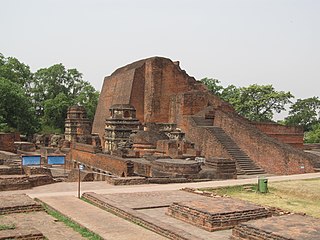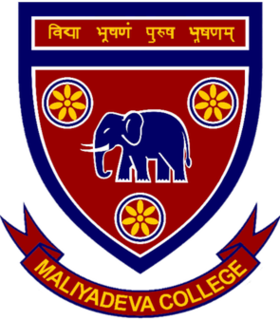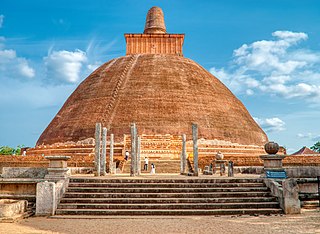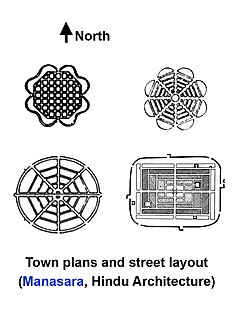
Sinhalese people are an Indo-Aryan ethnic group of the island of Sri Lanka. They were historically known as Hela people. They constitute about 75% of the Sri Lankan population and number greater than 16.2 million. The Sinhalese identity is based on language, cultural heritage and nationality. The Sinhalese people speak Sinhala, an insular Indo-Aryan language, and are predominantly Theravada Buddhists, although a minority of Sinhalese follow branches of Christianity and other religions. Since 1815, they were broadly divided into two respective groups: The 'Up-country Sinhalese' in the central mountainous regions, and the 'Low-country Sinhalese' in the coastal regions; although both groups speak the same language, they are distinguished as they observe different cultural customs.

Nalanda was a renowned Buddhist monastic university in ancient Magadha, India. Considered by historians to be the world's very first residential university, and among the greatest centers of learning in the ancient world, it was located near the city of Rajagriha and about 90 kilometres (56 mi) southeast of Pataliputra, operating from 427 to 1197 CE. Nalanda was established during the Gupta Empire era, and was supported by numerous Indian and Javanese patrons – both Buddhists and non-Buddhists. Over some 750 years, its faculty included some of the most revered scholars of Mahayana Buddhism. Nalanda Mahavihara taught six major Buddhist schools and philosophies such as Yogacara and Sarvastivada, the Hindu Vedas and its six philosophies, as well as subjects such as grammar, medicine, logic and mathematics. The university was also a major source of the 657 Sanskrit texts carried by pilgrim Xuanzang and the 400 Sanskrit texts carried by Yijing to China in the 7th-century, which influenced East Asian Buddhism. Many of the texts composed at Nalanda played an important role in the development of Mahayana and Vajrayana Buddhism including the Mahavairocana Tantra and the Bodhisattvacaryāvatāra of Shantideva. It was sacked and destroyed by the troops of Muhammad bin Bakhtiyar Khalji, partly restored thereafter, and continued to exist till about 1400 CE. Today, it is a UNESCO World Heritage Site.

Vastu shastra are texts on the traditional Indian system of architecture. These texts describe principles of design, layout, measurements, ground preparation, space arrangement, and spatial geometry. The designs aim to integrate architecture with nature, the relative functions of various parts of the structure, and ancient beliefs utilising geometric patterns (yantra), symmetry, and directional alignments.
Shastra is a Sanskrit word that means "precept, rules, manual, compendium, book or treatise" in a general sense. The word is generally used as a suffix in the Indian literature context, for technical or specialized knowledge in a defined area of practice.

The Mahavamsa is the meticulously kept historical chronicle of Sri Lanka written in the style of an epic poem written in the Pali language. It relates the history of Sri Lanka from its legendary beginnings up to the reign of Mahasena of Anuradhapura covering the period between the arrival of Prince Vijaya from India in 543 BCE to his reign and later updated by different writers. It was composed by a Buddhist monk at the Mahavihara temple in Anuradhapura about the fifth century A.D. In 2021, a petition was made to declare the original leaf book a UNESCO heritage.

Theravada Buddhism is the largest and official religion of Sri Lanka, practiced by 70.2 percent of the population as of 2012.

Maliyadeva College is a national school controlled by the Sri Lankan central government. It is located in Kurunegala, Sri Lanka, and was established in 1888 by the Buddhist Theosophical Society, led by Colonel Henry Steel Olcott. It is one of Sri Lanka's oldest schools. Today, the school accommodates 5,000 students. The term "Devans" is used to refer to the former and present pupils of Maliyadeva College.

Abhayagiri Vihāra was a major monastery site of Mahayana, Theravada and Vajrayana Buddhism that was situated in Anuradhapura, Sri Lanka. It is one of the most extensive ruins in the world and one of the most sacred Buddhist pilgrimage cities in the nation. Historically it was a great monastic centre as well as a royal capital, with magnificent monasteries rising to many stories, roofed with gilt bronze or tiles of burnt clay glazed in brilliant colors. To the north of the city, encircled by great walls and containing elaborate bathing ponds, carved balustrades and moonstones, stood "Abhayagiri", one of seventeen such religious units in Anuradhapura and the largest of its five major viharas. One of the focal points of the complex is an ancient stupa, the Abhayagiri Dagaba. Surrounding the humped dagaba, Abhayagiri Vihara was a seat of the Northern Monastery, or Uttara Vihara and the original custodian of the Tooth relic in the island.

The architecture of ancient Sri Lanka displays a rich diversity, varying in form and architectural style from the Anuradhapura Kingdom through the Kingdom of Kandy (1469–1815). Sinhalese architecture also displays many ancient North Indian influences. Buddhism had a significant influence on Sri Lankan architecture after it was introduced to the island in the 3rd century BC, and ancient Sri Lankan architecture was mainly religious, with more than 25 styles of Buddhist monasteries. Significant buildings include the stupas of Jetavanaramaya and Ruwanvelisaya in the Anuradhapura kingdom and further in the Polonnaruwa Kingdom. The palace of Sigiriya is considered a masterpiece of ancient architecture and ingenuity, and the fortress in Yapahuwa and the Temple of the tooth in Kandy are also notable for their architectural qualities. Ancient Sri Lankan architecture is also significant to sustainability, notably Sigiriya which was designed as an environmentally friendly structure.

Shilpa Shastras literally means the Science of Shilpa. It is an ancient umbrella term for numerous Hindu texts that describe arts, crafts, and their design rules, principles and standards. In the context of Hindu temple architecture and sculpture, Shilpa Shastras were manuals for sculpture and Hindu iconography, prescribing among other things, the proportions of a sculptured figure, composition, principles, meaning, as well as rules of architecture.

The Mānasāra, also known as Manasa or Manasara Shilpa Shastra, is an ancient Sanskrit treatise on Indian architecture and design. Organized into 70 adhyayas (chapters) and 10,000 shlokas (verses), it is one of many Hindu texts on Shilpa Shastra – science of arts and crafts – that once existed in 1st-millennium CE. The Manasara is among the few on Hindu architecture whose complete manuscripts have survived into the modern age. It is a treatise that provides detailed guidelines on the building of Hindu temples, sculptures, houses, gardens, water tanks, laying out of towns and other structures.

Hindu architecture is the traditional system of Indian architecture for structures such as temples, monasteries, statues, homes, market places, gardens and town planning as described in Hindu texts. The architectural guidelines survive in Sanskrit manuscripts and in some cases also in other regional languages. These texts include the Vastu shastras, Shilpa Shastras, the Brihat Samhita, architectural portions of the Puranas and the Agamas, and regional texts such as the Manasara among others.

The Kingdom of Dambadeniya was a medieval kingdom in what is present day Sri Lanka. The kingdom's rulers reigned from 1220–1345.
Sandakada pahana, also known as Moon-stone, is a unique feature of the Sinhalese architecture of ancient Sri Lanka. It is an elaborately carved semi-circular stone slab, usually placed at the bottom of staircases and entrances. First seen in the latter stage of the Anuradhapura period, the sandakada pahana evolved through the Polonnaruwa, Gampola and Kandy period. According to historians, the sandakada pahana symbolises the cycle of Sansāra in Buddhism.

Tripiṭaka or Tipiṭaka, meaning "Triple Basket", is the traditional term for ancient collections of Buddhist sacred scriptures.
Sinhala numerals, are the units of the numeral system, originating from the Indian subcontinent, used in Sinhala language in modern-day Sri Lanka.

Bodagama Chandima was born on 3 February 1957 at Thanamalwila in southern Sri Lanka. As of 2015 he taught Theravada Buddhism in Taiwan. With a group of Taiwanese Buddhists, he founded the Theravada Samadhi Education Association in Taipei.

Hikkaduwe Sri Sumangala Thera who was born on 20 January 1827 was a Sri Lankan Buddhist monk. The birth name of Hikkaduwe Sri Sumangala Thera was Don Niculus Gunawardhana. He was one of the pioneers of Sri Lankan Buddhist revivalist movement in the 19th century. He did a great service to improve the Buddhist Education in the country and was the founder of Vidyodaya Pirivena, Maligakanda in 1873. In 1848 he obtained higher ordination of Upasampada from the Malwatte Chapter, Kandy. A veteran author and a fiery orator, he was a major figure in the Panadurawadaya, a religious debate held between Christian missionaries and Buddhist monks in 1873 at Panadura, Sri Lanka. He was well versed in Sinhala, Pali, Sanskrit, English, Buddhism, and History. In 1864 he was appointed as the Chief priest of the Sripada.
Sanskrit Buddhist literature refers to Buddhist texts composed either in classical Sanskrit, in a register that has been called "Buddhist Hybrid Sanskrit" (BHS), or a mixture of the two. Several non-Mahāyāna Nikāyas appear to have kept their canons in Sanskrit, most prominent among which was the Sarvāstivāda. The Mahāyāna Sūtras are also in Sanskrit, with less classical registers prevalent in the gāthā portions. Buddhist Tantras too are written in Sanskrit, sometimes interspersed with Apabhramśa, and often containing notable irregularities in grammar and meter.
Kanippayyur Shankaran Namboodiripad (1891-1981) was a Nambudiri Brahmin in the State of Kerala in India who helped rejuvenate interest in the Indian traditional architectural styles known collectively as Vastu shastra. He was a consultant for the renovation of many temples in Kerala, Tamil Nadu and Karnataka, and also the Royal Architect for the three royal families of Travancore, Cochin and Kozhikode (Calicut). He was a prolific writer authoring more than a hundred books on a variety of books relating to traditional knowledge areas like vastu shastra (architecture), jyothisha, ayurveda, and also books on history. He compiled a Sanskrit-Malayalam Dictionary and a Dictionary of Indigenous Medicines.














